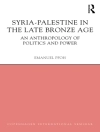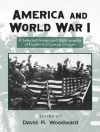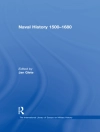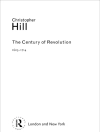During the rise of New York from the capital of an upstart nation to a global metropolis, the visual language of Greek and Roman antiquity played a formative role in the development of the city’s art and architecture. This compilation of essays offers a survey of diverse reinterpretations of classical forms in some of New York’s most iconic buildings, public monuments, and civic spaces.
Classical New York examines the influence of Greco-Roman thought and design from the Greek Revival of the late eighteenth and early nineteenth centuries through the late-nineteenth-century American Renaissance and Beaux Arts period and into the twentieth century’s Art Deco. At every juncture, New Yorkers looked to the classical past for knowledge and inspiration in seeking out new ways to cultivate a civic identity, to design their buildings and monuments, and to structure their public and private spaces.
Specialists from a range of disciplines—archaeology, architectural history, art history, classics, and history— focus on how classical art and architecture are repurposed to help shape many of New York City’s most evocative buildings and works of art. Federal Hall evoked the Parthenon as an architectural and democratic model; the Pantheon served as a model for the creation of Libraries at New York University and Columbia University; Pennsylvania Station derived its form from the Baths of Caracalla; and Atlas and Prometheus of Rockefeller Center recast ancient myths in a new light during the Great Depression.
Designed to add breadth and depth to the exchange of ideas about the place and meaning of ancient Greece and Rome in our experience of New York City today, this examination of post-Revolutionary art, politics, and philosophy enriches the conversation about how we shape space—be it civic, religious, academic, theatrical, or domestic—and how we make use of that space and the objects in it.
Spis treści
Preface vii
List of Figures ix
Classical New York
Elizabeth Macaulay-Lewis and Matthew Mc Gowan | 1
1. The Custom House of 1833–42: A Greek Revival Building in Context | 15
Francis Morrone
2. The Imperial Metropolis | 38
Margaret Malamud
3. Archaeology versus Aesthetics: The Metropolitan Museum of Art’s Classical Collection in Its Early Years | 63
Elizabeth Bartman
4. The Gould Memorial Library and Hall of Fame: Reinterpreting the Pantheon in the Bronx | 85
Elizabeth Macaulay-Lewis
5. “The Expression of Civic Life”: Civic Centers and the City Beautiful in New York City | 114
Jon Ritter
6. The Titans of Rockefeller Center: Prometheus and Atlas | 140
Jared A. Simard
7. Rome Reborn: Old Pennsylvania Station and the Legacy of the Baths of Caracalla | 161
Maryl B. Gensheimer
8. The Roman Bath in New York: Public Bathing, the Pursuit of Pleasure, and Monumental Delight | 182
Allyson Mc David
9. “In Ancient and Permanent Language”: Artful Dialogue in the Latin Inscriptions of New York City | 211
Matthew Mc Gowan
Reflections | 235
Elizabeth Macaulay-Lewis and Matthew Mc Gowan
Glossary | 239
Acknowledgments | 243
Bibliography | 245
List of Contributors | 267
Index
O autorze
Matthew M. Mc Gowan is Associate Professor and Chair of Classics at Fordham University.












